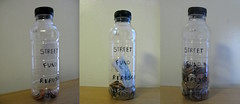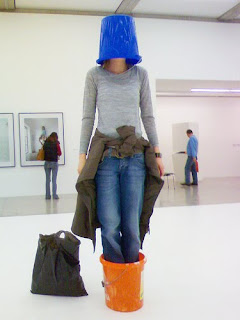Notes#013
Democracy has been hated since ancient times as a perversion of the good government due to the excess of license which with intensive participation ruins the state; this has been re-directed to the search of material prosperity and private pleasures which results on citizen’s indifference towards the common good and the weakening of public authority. So if not by the illness death comes by the cure.
The diagnosis is identical today, people are disengaged from politics, and if politics is, as in ancient times, the search for the common good, and today’s citizen is the individual consumer pursuing his private affairs we can see how democracy was reduced to a mere form of society emptied from politics, and seen as a corruption of it’s people and not of its government.
Who is entitled to govern has always been the question in search of the good government and it is where democracy, states Rancière, reveals the trouble. Plato lists seven titles to govern; four related to birth: being older, or the father, highborn, free; and two associated to relations in nature: stronger over the weaker, wiser over the ignorant. The first four, base government of kinship; the latter two on excellence, and according to Rancière it is where politics commences, when the title to govern is separated from kinship, and also when the seventh title appears – the drawing of lots – the title of chance, the democratic title which is no title. And that is what is so outrageous for some people: that age, birth or even wisdom has to ‘bow before the law of chance.’
Then, if politics begins when the power of birth is undermined and its true nature disclosed – property-owning power – democracy creates a rupture relegating to different places the principle of government and the principle of society, and this dissociation is its ultimate meaning: ‘the primary limitation of the power of forms of authority that govern the social body.’ (45) And for Rancière ‘if politics means anything it means something that is added to the possible governments’, that naturally are oligarchic, ‘and put themselves forward as models for the construction of larger an more complex human communities.’ (45) This something is democracy, the government of chance. So in his view democracy is neither a type of constitution nor a form of society, ‘but is this ungovernable on which every government must ultimately find out it is based.’ (49) The condition to have a political government, thus, is to be founded on the absence of title to govern, and politics exists only if there is a supplementary title, and again the scandal of democracy, is that this title is the absence of title; the power of anyone at all. So at the bottom of every government is equality, for inequality cannot exist without a ‘multitude of egalitarian relations’.
Democracy has been confused with representative democracy, but lets not be fooled says Rancière, ‘representation was never a system invented to compensate for the growth of population’ it represents the property owning minorities ‘who are entitled to take charge of public affairs.’ But again democracy is not a type of constitution; it can never be identified with a juridico-political form. It is the power of the people – not of the majority but of anyone and everyone – and this power works beneath the state, because of its egalitarian foundation; and beyond the state, because its public activity frustrate the ‘State’s tendency to monopolize and depoliticize the public sphere’. The State’s tendency is to shrink this public sphere , by relegating the interventions of the citizen’s to the private domain; democracy fights this tendency in the endless effort to enlarge this sphere. This struggle is then about distribution, a key concept in Rancière’s thought, the ‘distribution of the public and the private that shores up the twofold domination of the oligarchy in the State and in society’. This re-distribution is a struggle to: defend the ‘public character of spaces, relations and institutions regarded as private’ (56); recognize ‘the public character of types of spaces and relations that were left to the discretion of the power of wealth;’ (55) by doing so it enlarges the ‘recognition, as equals and as political subjects those who have been relegated by the State law to the private life of inferior beings.’
The idea of becoming a political subject is also paramount to Rancière’s thought; are man and citizen the same subject? Rancière unpacks this question through Hannah Arendt and Karl Marx notion of Human Rights. To the first these are the rights of bare life, of those who do not belong to any constitutional national community, therefore without rights, so the Human Rights are an illusion; to the latter these are the rights of citizens, property owners who belong to a national community, therefore the rights of those who have rights. But to Rancière they both miss that the one of politics exists only through that supplement which is democracy. Neither bare life, nor citizenship of constitutional texts are political subjects, these are always defined by an interval between identities, when the distribution of terms and places are overturned.
Rancière uses the statement of Olympe Gouges to further this idea: 'Woman has the right to mount the scaffold; she must equally have the right to mount the rostrum', i.e., if she can be sentenced to death then she does not belong solely to the domestic life. ‘Women can therefore claim rights as women and as citizens, an identical right that, however, can only be asserted in the form of the supplement.’ (60) Gouges, maintains Rancière, proved wrong both Arendt’s and Marx’s views. She ‘inserted a third possibility: women's and citizen's rights are the rights of those who have not the rights that they have and have the rights that they have not.’ (61) They are deprived of the rights but at the same time they exercise them. Politics is that operation of splitting into two – which he illustrates with the example of the women that in 1955 refused to leave the white people’s seat in an Alabama bus. ‘That is what the democratic process implies: the action of subjects who, by working the interval between identities, reconfigure the distributions of the public and the private, the universal and the particular.’ Democracy must constantly bring into ‘play, inventions of forms of subjectivation and of cases of verification that counteract the perpetual privatization of public life, in a ‘political movement that blurs both the given distribution of the individuals and the collective, and the accepted boundary of the political and the social.’
Ranciére call us to renounce to the faith in the vision of democracy by the multitude, which is such a dreadful task; but if we understand democracy’s true meaning, that an ‘egalitarian society is only ever the set of egalitarian relations that are traced here and now through singular and precarious acts,’ (96) and that ‘it is only entrusted to the constancy of its specific acts,’ then, as he finishes ‘to those who know how to share with anybody and everybody the equal power of intelligence,’ democracy can ‘inspire courage, and hence joy.’ (97)
Participation in, and the construction of, democracy, according to Rancière, is then to act in the intervals of our own identity split and therefore fight the state’s privatization of our private life with single and precarious gestures of equality.
RANCIÉRE, J. 2006. Hatred of Democracy. Verso.

















































